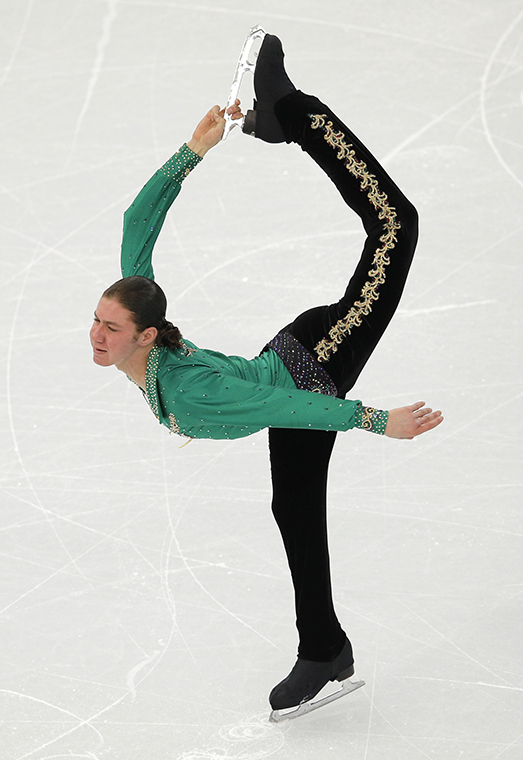‘Four is gold, five is a crowd’
Jason Brown skates for gold at this years Olympics in Sochi
February 17, 2014
Figure skating spectators will see their fair share of elaborately choreographed routines on Olympic ice this year, but intricacy could reach a new level if skaters are able to pull off a seemingly impossible move.
The most challenging jump skaters have achieved thus far is the quadruple, consisting of four rotations in the air. There are six variations of this jump, and only three have been successfully landed, according to Juliet Newcomer, director of technical services of the U.S. Figure Skating Association. However, skaters may begin to attempt the quintuple, consisting of five rotations in the air, a feat many doubt is possible.
The attempt to achieve an impossible jump is nothing new to figure skaters and coaches. Irma Sveiteryte, founder and head coach of Figure Skate Chicago Skating School, said she remembers when landing two triples was thought to be impossible. Now, skaters are performing quadruples.
But James Richards, professor of biomechanics at the University of Delaware, used physics to illustrate the impossibility of the quintuple. Skaters can currently jump 24 to 25 inches in the air and can spin a maximum of 3 1/2 times at a rate of 400 revolutions per minute. Skaters are not going to be able to jump much higher, therefore making it impossible to add any more rotations, he said.
“If they’re not going to jump a lot higher in the air, that means they have to spin a lot faster to land five,” Richards said. “They’d have to be even narrower than they are now and I don’t think that we’re going to find that person.”
Richards told the magazine Scientific American a person would have to be built thinner than a pencil to successfully land a quintuple.
Spinning faster is a challenge, too. Skaters spin on an axis while in the air, and as the body mass moves farther from that axis, the inertia increases, making it more difficult for the skater to spin faster, Richards said. Athletes who are narrow enough can do four spins, but they may not be able to spin fast enough to accomplish five.
Like other jumps, the quintuple poses a safety threat to skaters who attempt it. Leaning in the air causes the athlete to land with his feet beneath him and fall down, possibly resulting in injury. The quintuple is a problem if it consistently causes the skater to lean and risk being injured, Richards said, but it will not put skaters at additional risk because they can fall during any jump.
The safety risks may result in the quintuple’s banishment by the USFSA and the International Skating Union, Newcomer said.
Both organizations consider safety when determining whether a move should be banned, Newcomer said. When a move is banned it cannot be performed in competition. She said she is not aware of any discussion in the USFSA about potentially banning the quintuple, but if it causes a significant number of injuries, the ISU and USFSA would investigate the issue.
“We do definitely have a concern about safety,” Newcomer said. “As well as decency and aesthetics and trying to keep the sport beautiful.”
For the jump to be banned in the upcoming season, USFSA would have to push it through its councils and committees by July 1, according to Newcomer.
Where some see a safety risk, skaters see a challenge, according to Sveiteryte. She said, while she is concerned about safety, she thinks skaters should be able to test the limits of their abilities.
“It is just an improvement of the sport,” Sveiteryte said. “If you want to go further, you’ve got to push the boundaries.”
It is not the coaches pushing the skaters to go further; rather the skaters who are challenging themselves, Sveiteryte said. Athletes who want to move past the quadruples may ignore the safety risks and attempt the quintuple, Richards said.
“There’s certainly nothing to stop them from trying it,” Richards said.








